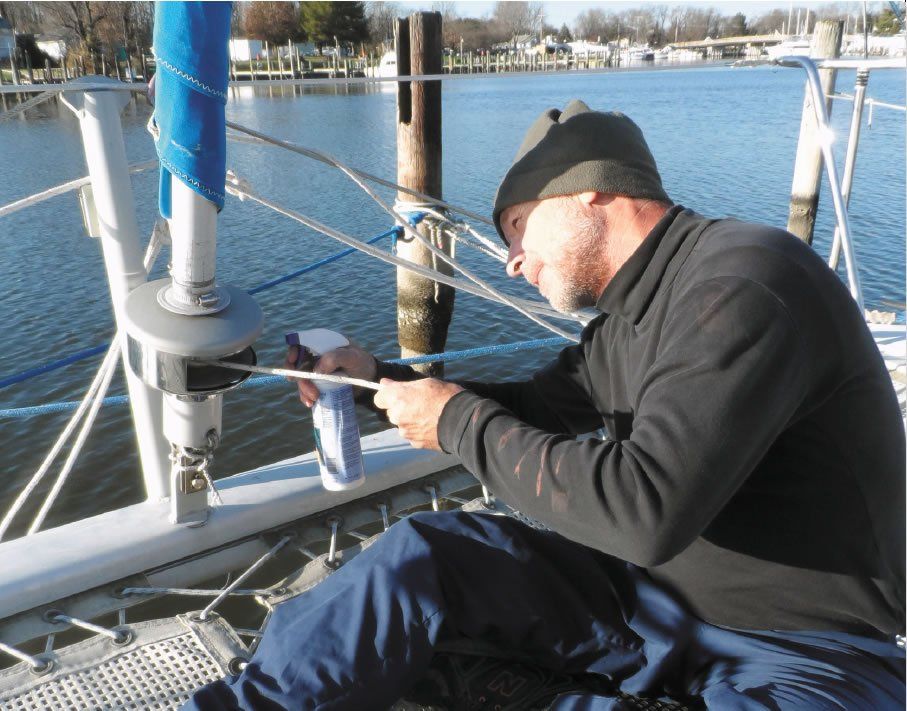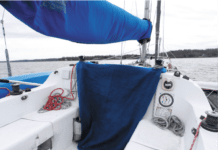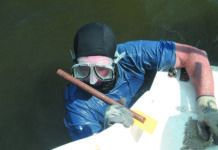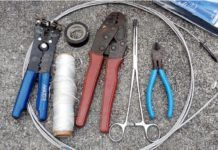Fair Through Hull Fittings: Essential to a Smooth Bottom
In light air, a major portion of the total resistance of a sailboat derives from skin friction. To oversimplify, the smoother the boat's "skin" — the submerged part of the vessel — the less power is required to drive it to a given speed. Put another way, given two boats identical in every way, including sail area, the boat with the smoother bottom will be slightly faster than a boat with a rough bottom in light air. Most racing sailors have learned the value of a smooth bottom. Ironically, cruising sailors can benefit at least as much from the creation of a low-resistance bottom as racing sailors, although you rarely see a cruising or daysailing boat with a bottom to match that of a good racing boat.
How to Replace Moldy Fabric with Wood Strips
Many of the fiberglass boats manufactured in the 70s and 80s, sail or power, were built on production assembly lines where speed and expense...
Spiffy Teak Tips for the Penny Pincher
Most teak cleaners don't just clean; they also remove weathered woods surface fibers and expose new wood. As much as 0.010 inches of surface teak can be removed in a single cleaning when using some common teak-cleaning products. Regularly cleaning with these products will shorten a teak decks life. Some also contain strong alkalis that can harm paint, caulk, and aluminum.
Descaling Solutions for Boats
In addition to all of that lovely salt, seawater is very hard, nearly saturated with calcium. All it needs is something to react with (uric acid in the head) or localized overheating (engine) to create concrete-like incrustations. Sometimes mechanical removal is possible; a favorite cruiser ritual involves hauling out the sanitation hoses and beating them on concrete to remove internal scale build-up. Heat exchangers can be reamed out with a rod, but most engine and plumbing systems are inaccessible without considerable disassembly.
Repairing Molded Plastics
Before looking for the right glue, understand why the part broke. Did it succumb to a combination of UV damage, creep (distortion), fatigue, and...
SNADs: Snaps Without Screws
No one likes drilling holes in their boat, and to drill holes for a simple snap seems like overkill. I love snaps for window...
How to Repair a Water-Damaged Teak and Holly Sole
A sailing buddy came to me looking for advice. He had inadvertently left a portlight open and a combination of rain and snow had...
Five Best Homemade Sail Repair and Splicing Tools
I doubt there is a sailmaker out there who doesn’t have a few shop-built tools in daily use. Here are five of my favorites:...
Six Best Homemade Boat Maintenance Tools
OSHA has a thing against homemade tools. While a shortened extension on a paint roller won’t give them heartburn, modified power tools and attachments...
A Smart, Easy Way to Rewire
Running the wires for new electronics requires your best cursing vocabulary, lots of sweat, twisting body contortions, luck, and the occasional bandage. For tips on how to make this job easier, we turned to PS contributor Bill Bishop. A professional marine-electronics installer, Bishop has many ingenious ways to thread a wire from point A to point B.


















































